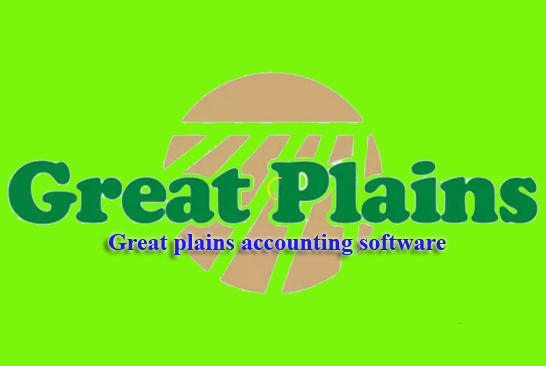Great Plains Accounting Software, also known as Microsoft Dynamics GP, is an enterprise resource planning (ERP) software solution designed for small to mid-sized businesses.
It was developed by a company called Great Plains Software, which was later acquired by Microsoft in 2001. Since then, it has been part of the Microsoft Dynamics family of products.
Here are some key features and functions of Great Plains Accounting Software (Microsoft Dynamics GP) :
Financial Management :
Financial Management, in the context of business and accounting, refers to the process of planning, organizing, controlling, and monitoring a company’s financial resources. It is a crucial aspect of business operations, as it ensures that a company’s financial health is maintained and its goals are met. Here are some key components of financial management:
Financial Planning :
Financial management begins with creating a financial plan. This involves setting financial goals, forecasting revenues and expenses, and creating a budget to achieve those goals. A well-structured financial plan provides a roadmap for a company’s financial activities.
Budgeting :
A budget is a detailed financial plan that outlines how a company will allocate its resources to achieve its goals. It includes revenue projections, expense estimates, and capital allocation. Regularly tracking actual financial performance against the budget helps in financial control.
Financial Analysis :
Financial management involves analyzing financial data and performance to gain insights into a company’s financial health. This analysis may include profitability analysis, liquidity analysis, and solvency analysis to assess the company’s ability to meet its short-term and long-term obligations.
Risk Management :
Identifying, assessing, and mitigating financial risks is a critical aspect of financial management. Companies need to safeguard against risks such as market fluctuations, credit risks, and operational risks. Risk management strategies may involve insurance, hedging, or diversification.
Cash Flow Management :
Maintaining healthy cash flow is essential for business sustainability. Financial management includes optimizing cash flow by managing accounts receivable and accounts payable, as well as monitoring and forecasting cash flow to ensure there is enough liquidity to cover operational expenses.
Asset Management :
Managing a company’s assets efficiently is important for maximizing returns on investment. This includes decisions related to capital investment, asset acquisition, and asset utilization.
Debt Management :
Companies often use debt to finance their operations and growth. Financial management involves determining the appropriate level of debt and managing it effectively. This includes decisions related to taking on debt, making debt payments, and refinancing when necessary.
Financial Reporting :
Financial management also involves the preparation and presentation of financial statements and reports. These reports include the income statement, balance sheet, and cash flow statement, which provide a snapshot of a company’s financial performance to stakeholders.
Compliance and Regulatory Matters :
Ensuring compliance with financial regulations and reporting standards is a crucial part of financial management. This includes adhering to accounting standards, tax laws, and other financial regulations.
Investment Decisions :
Financial managers may be responsible for making investment decisions, such as determining the best use of surplus funds, evaluating investment opportunities, and managing investment portfolios.
Financial management is typically carried out by finance professionals, including CFOs (Chief Financial Officers) and financial managers. It plays a vital role in ensuring a company’s financial stability, growth, and long-term success.
Effective financial management helps companies make informed decisions, allocate resources wisely, and achieve their financial objectives.
Inventory Management :
Great Plains allows businesses to track and manage their inventory, including inventory control, item forecasting, and order processing.
Supply Chain Management :
It offers supply chain and order processing capabilities to help businesses manage their procurement and sales processes efficiently.
Human Resources and Payroll :
The software includes modules for managing payroll, time and attendance, and human resources.
Business Intelligence :
Microsoft Dynamics GP includes reporting and analytics tools to help businesses make informed decisions by providing insights into their financial and operational data.
Customization :
The software is highly customizable and can be tailored to the specific needs of a business through add-ons and custom scripting.
Integration :
It can integrate with other Microsoft products like Microsoft Office, as well as third-party applications.
Multi-Currency and Multi-Language Support :
Great Plains supports multi-currency and multi-language capabilities, making it suitable for businesses with international operations.
Scalability :
It is designed to grow with your business, accommodating the needs of both small and medium-sized enterprises.
User-Friendly Interface :
The user interface is designed to be user-friendly, making it easier for employees to navigate and use the software.
Microsoft Dynamics GP has a strong user base, especially among mid-sized businesses, and it continues to receive updates and support from Microsoft. However, it’s essential to note that software offerings may evolve, and the latest information about this software might differ from what was available up to my knowledge cutoff date in January 2022.
Therefore, I recommend visiting the official Microsoft website or contacting a Microsoft Dynamics GP provider for the most up-to-date information and details regarding the software’s features, pricing, and availability.
